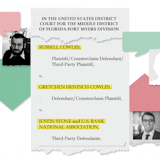Dave Mech is a senior research scientist with the U.S. Geological Survey and a University of Minnesota adjunct professor. He's widely recognized as one of the world's pre-eminent wolf experts.
Early in his career, Mech researched wolves on Isle Royale, initiating what has become a 60-year study of wolves and moose on the Lake Superior island. In 1968, he began studying wolves in an area northeast of Ely. That study continues.
Mech holds a bachelor's degree from Cornell and a doctorate from Purdue.
In the interview below, Mech expands on a recent study he co-published with John Fieberg of the University of Minnesota that challenges an earlier DNR study that said climate change is contributing to the decline of northeast Minnesota moose.
Mech and Fieberg instead believe wolves were a contributor to the decline.
Q Describe findings of the study you and professor Fieberg published recently in the Journal of Wildlife Management.
A Two major findings. The first is that studies by the Minnesota DNR in 2009-2010 suggesting that the decline of northeast Minnesota moose was related to some kind of climate change minimized indications that wolves were involved.
The study said wolves likely were not involved in the moose decline to a significant degree, because statewide surveys of wolves seemed to indicate a stable population.


